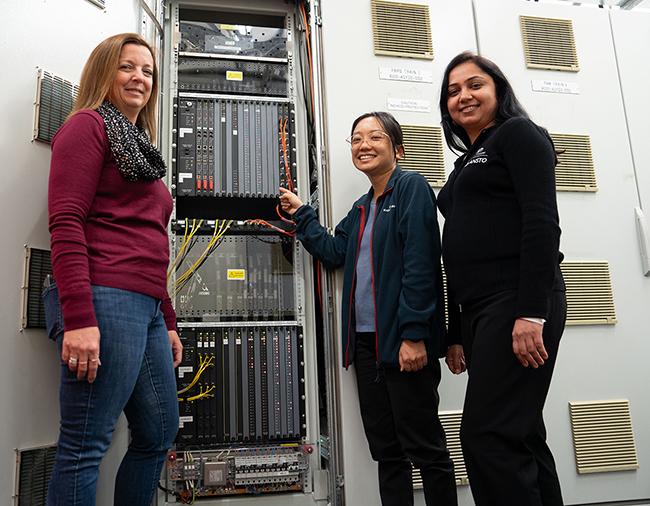During the scheduled shutdown of the OPAL multi-purpose reactor, an ANSTO engineering and project team has installed a new safety shutdown instrumentation and control system (I&C).
The expert Engineering team comprising Cristina Flego, Shalini Sharma and Queenie Wong completed the installation and commissioning of the new system during shutdown.

They were supported by Chris Mehl, Kia Nabavi-Tabrizi, Will Kaploun, Antonio Velasco, Anthony Noonan, Steve Pangelis, Mark Healy, Gerard Breen, the OPAL I&C and Electrical Workshop Teams and Contract Supervisor Grant Frazer. The team worked with the vendor to design and test the replacement system.
The team has completed all the required commissioning reports to allow the system to be handed back to operations.
“It is currently up and running smoothly in the background to help with the management of some containment and safety systems, while the reactor is in shutdown down mode,” explained Cristina.
“Its primary role when the reactor is operational, to provide frontline monitoring of key reactor parameters and initiate an automatic shut it down for safety purposes.”
A decision was made to replace the system due to its obsolescence and the unavailability of spare parts from the vendor.
The shutdown of the reactor for the replacement of the cold neutron source, was an opportune time to complete the complex task.
The existing system was operational for close to 20 years. The new system is essentially the same with upgraded electronics components.
Over about eight weeks, the team removed and replaced all parts of the system in the rather confined spaces of the cabinets that house the system. This involved replacing all the old equipment, connecting all the interface cabling and then checking that it worked properly.
“We did have one issue when we powered back up and had to think outside the box to isolate the problem,” said Cristina.
“It was very much a trial-and-error situation. The symptoms were not really pointing us in the right direction. We stood back for a minute and asked ourselves ‘what have we actually modified?’ And then sure enough, that’s where we found the problem,” she said.
A damaged cable was identified as the source of the issue and replaced.
The system itself was designed as a high reliability safety system and ANSTO provided the necessary additional qualifications required for a nuclear environment.
When operating, the safety data is monitored in OPAL’s main control room, so the commissioning of system interfaces was also important for this project.
‘Our group worked well together on this project,” said Cristina.
“Although there tend to be more males than females in engineering, things are definitely changing,” said Cristina, who has been an engineer for 29 years.
“During my time in the profession, I have seen many more female engineers in the workforce.”
Instrumentation and control are used to measure, monitor, and control various aspects of a process, such as temperature, pressure, flow rate, and chemical composition. These systems help to ensure that processes operates safely, efficiently, and within specified parameters.







